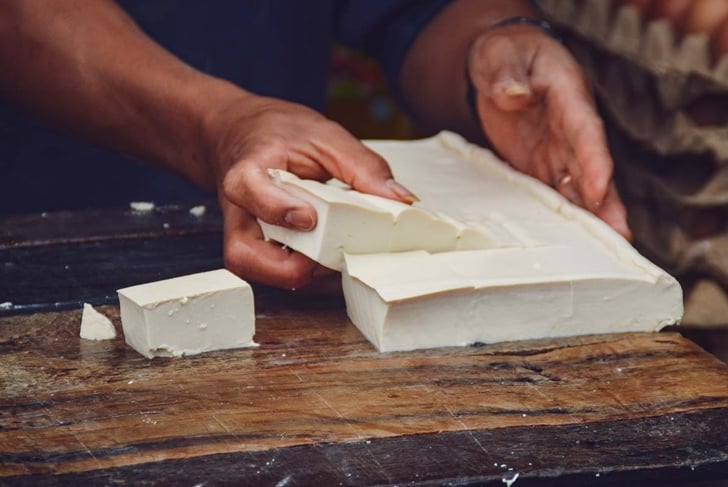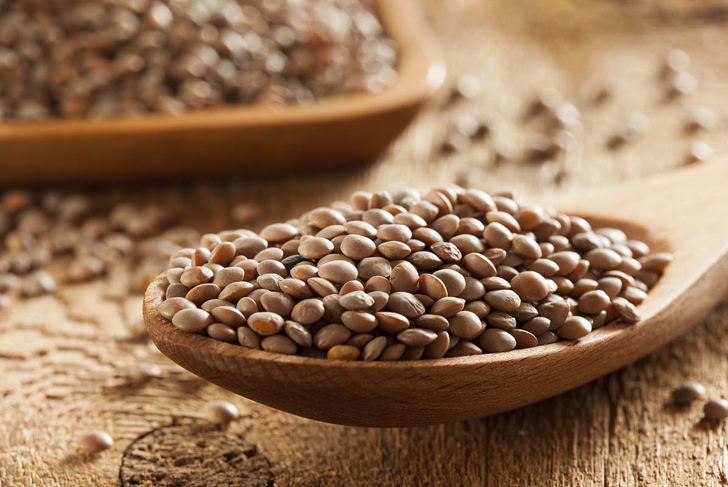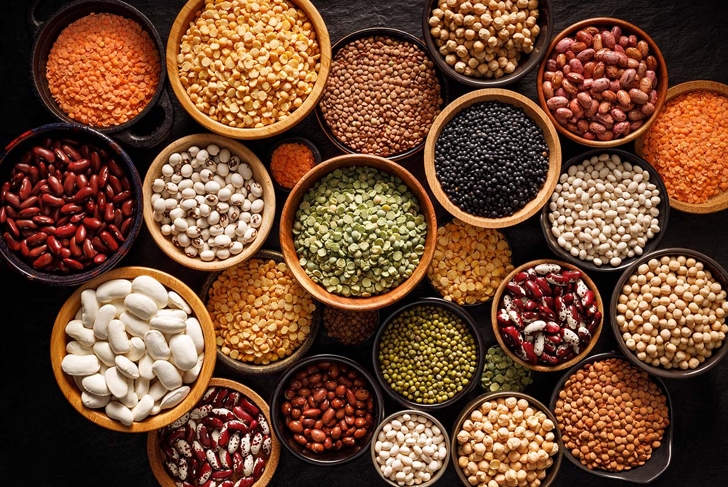
Iron plays an important role in our bodies. We need it to make certain hormones as well as hemoglobin, which is what carries oxygen to our lungs and muscles. When we’re deficient in iron, we may experience symptoms like fatigue, chest pains, or dizziness. Luckily, there are many plant-based iron sources to ensure you’re reaching your recommended daily amount. The iron in plants is nonheme which means it can be hard to absorb. So, we need a little extra help to make sure we’re getting enough of it.
Leafy greens

Leafy greens have many health benefits. Studies suggest they may slow cognitive decline and reduce the chance of developing heart disease. They even have the potential to improve anemia, a disease caused by chronically low iron levels. Two examples of leafy greens high in iron are spinach and Swiss chard. One cup of cooked spinach has over 6 mg of iron, and 1 cup of cooked Swiss chard contains 4 mg in 1 cup.
Tofu

Tofu is a versatile food made from soybeans. Many vegetarians use it in place of everything from eggs to meat. Just 1/2 cup of tofu has about 6 mg of iron. Since the iron in tofu is nonheme, you can pair it with a food high in vitamin C, such as bell peppers, to help your body’s absorption.
Lentils

It doesn’t matter whether you eat the green, brown, or red ones, lentils are a great source of iron. 1 cup has about 6 mg of iron. They rank second in protein levels compared to other beans, and a single serving has about 32 percent of our recommended daily intake of fiber. Lentils are the perfect legume to add to salads, soups, and stews.
Dark chocolate

As if you needed another reason to eat chocolate, right? Years of research have discovered that dark chocolate is healthy. Cocoa has flavanols, which support good heart health. Those same flavanols have anti-inflammatory properties and antioxidants. One serving of dark chocolate also has 39 percent of iron needed daily, which makes it one of the more substantial sources of nonheme iron. When trying to figure out which chocolate to choose, make sure it has at least 70 percent cacao solids.
Fortified cereals

Since iron is the most common deficiency, some food companies fortify, or add, iron to their products. A serving of fortified cereals has about 3 or 4 mg of iron. To make sure you’re grabbing a fortified cereal, read the nutrition label on the side of the box. Some cereal boxes may even advertise the added iron on the front too. Just remember to drink your tea or coffee an hour before or after because pairing caffeine with your fortified cereal may block your iron absorption.
Dried apricots

Apricots are small, fuzzy, and plump stone fruits that originated in China over 4,000 years ago. Dried apricots are higher in many nutrients compared to fresh ones (though also higher in sugar). They’re loaded with potassium, calcium, and fiber, and a handful of dried apricots has about 1 mg of iron. You can eat them alone as a snack, add them to salads, or try this Apricot Hummus Ball recipe.
Beans

Beans weigh in as one of the highest nonheme iron-rich foods with at least 3 mg per serving. The beans with the highest iron levels are kidney, soybeans, and lima. To make sure you’re getting as much iron as possible, instead of discarding the water you soaked your beans in, use it to cook them.
Pumpkin seeds

Pumpkin seeds are a high-nutrient food. They’re loaded with fiber, magnesium, vitamin K, and manganese. They also contain a lot of iron. An ounce of pumpkin seeds contains more than 2 mgs of iron. Pumpkin seeds have a mild flavor, so it’s easy to pair them with many foods. They can be tossed into soups, smoothies, and salads. You can also enjoy them in your omelet.
Broccoli

One of the easiest ways to up your iron intake is by eating just a few extra broccoli stalks. In addition to having a lot of calcium, vitamin C, and other nutrients, 1 cup of chopped broccoli has about 1 mg of iron. Since broccoli contains nonheme iron and isn’t easily absorbed, try sauteing it in a cast-iron skillet.
Blackstrap molasses

Molasses is a by-product of sugar cane after several boiling sessions. The leftover nutrients and sugar from a third boil result in blackstrap molasses, which is very high in iron. Just 2 Tbsp yield more than 7 mg. Blackstrap molasses can be used in baking, smoothies, or sauces and dressings.





